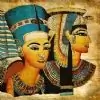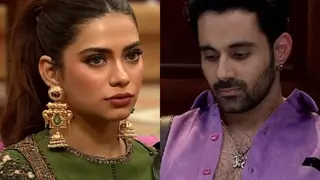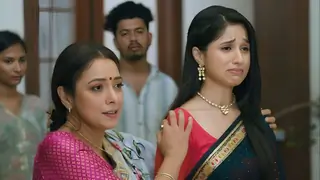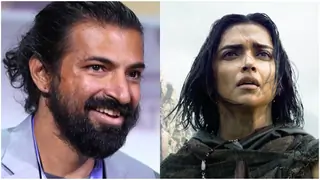Thanks for sharing such valuable information Abhay. 😛 It is much appreciated. Gives an insight into the world and happenings of those times.
But honestly, I am feeling quite foolish right now when all are talking about the importance of womenfolk and I am not able to locate any woman in the 4 illustrations (except 1 I think in one of the windows😕) Mera eyesight mein problem hai it seems. Would you please point them out Abhay😕😭
Will definitely state my insight into all the 4 questions later.😊
Thanks Abhay and KDR81 for pointing the women at the palace window😉 Now regarding my view on your 4 questions.
Does the presence of ladies in the portraits speaks something of women's position in that era ?
For a start I would say, when I hear the word Mughal and women together, I automatically view covered women and their pardah system. This entire view makes it look that Mughal women were backward, were involved only in their harem activities and not involved in decision making by their men. This is surprisingly so contrary to what your research and also what quite a few people might have read and seen in JA will identify with.
Mughals I feel were definitely more progressive than others when it came to taking political/administrative opinions from their begums and trusted womenfolk. Maham Anga, being a nurse of Jalal is a great example. Her opinions/interference/decisions during Jalal's early political career cannot be overlooked. Similarly, I have read about Salima Sultana too. A well-read women, a poetess and a person who played an important role in mediating between Akbar and Salim is another example of a woman playing critical role in Akbar's time. Read that Gulbadan Begum (the writer of Humayun nama) and Hamida Bano played a vital role as a conciliator when Salim revolted against Akbar. Also read that it was because of Hamida Bano's continuous efforts that there were good relations between Iran and Hindustan. Again read about Hamida Bano that she did several official correspondences for settling matters while also having the right to issue farmans. This only shows their role in administrative/political matters. Your research on MUZ is worth taking note of. Be it harem activities, cavalry, official correspondences or farmans, she is seen and heard everywhere. Mah Chuk Begum (Hakim's mother) is another example of an ambitious lady who was involved politically. Who can forget Nurjahan, another very smart, cunning, beautiful, ambitious and politically involved lady. I also read about Jahan Ara Begum (daughter of Shahajahan) and how she was involved in political matters while also influencing Aurangzeb when he was making some unwise decisions due to his foolish advisors. This is just a gist of what I read. I am very sure you have a lot more to contribute. Only says about the role of Mughal women in that era.
I am strictly speaking about portrait 3. 😕It is clear that two women are peeping from the palace window seeing the goings on😊 Don't throw tomatoes please, but I felt that even I would be doing the same if someone was caught outside or jewellery was being brought to the palace😕 Couldn't deduce much other than that they were seeing the goings on.😭 Please no egg throwing, it stinks. Tomatoes chalega😛
*****************************************************************************************************
2. Also, about the expertise of the painters of those times, that in an illustration of a size comparable to 20x30 cms, they could display such fine scenes, with delicate details.??..👏
Spot on. Couldn't agree much. Such detailed paintings and that too in 20x30 cms size, which are still visible and can be understood/interpreted by us is definitely applaud worthy.
3. Would also like to hear about the destruction / losses of historical treasures at the hands of various agencies..?.?..
I have only one word and that is pathetic. Its like the Kohinoor. Hamara hai, but ab hamare paas nahi. Such valuable information destroyed, lost, missing and/or sold to foreign agencies only says a lot about us and not about them. Even they value our history more than us. Don't know what more to say.
4. Also, regarding the fight on boats.?? This was interesting.
Yes it is interesting, considering they were quite fewer than the fiercely fought land battles. The reason for this can be because Akbar and other successors too were far more involved in capturing and ruling neighbouring states. Hindustan was so big then and Akbar wanted to rule it. Attacking every princely state and to rule over them was quite a task. So they had to make do with small-time boat fights I think😆
Edited by Pals2411 - 11 years ago










































20